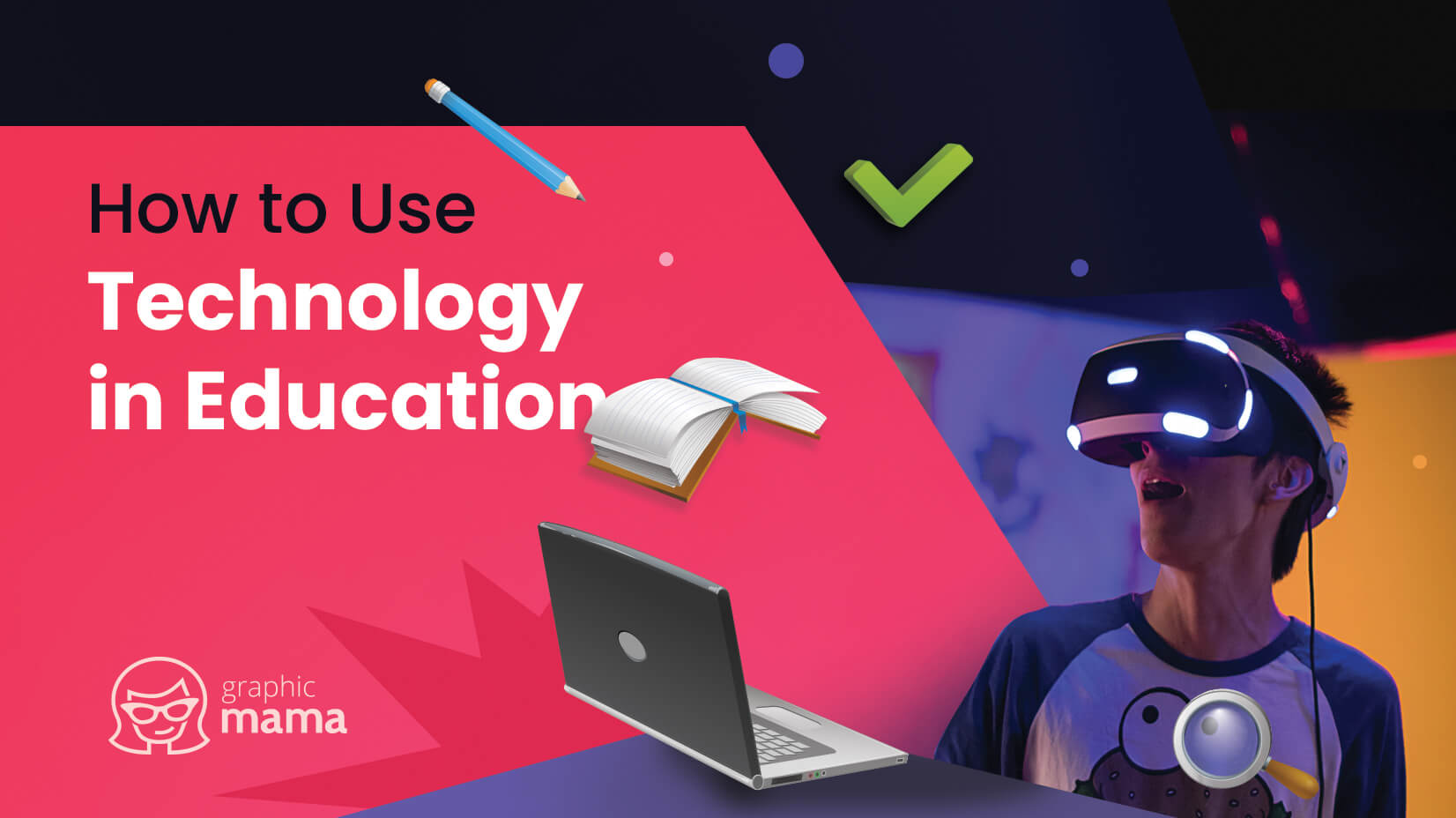
Technology in education, growing, growing, growing in all areas. The days of blackboard and exercise book learning haven’t totally vanished but the rise of technology in all areas of life has in no way bypassed education. Technology in education is a high-value concept, from interactive whiteboards in classrooms and the rise of online or virtual learning right through to educational apps and devices, technology in education is prominent. Teachers and educators are finding greater uses, learners are excited and engaged in ways we couldn’t even imagine just a few years ago. As online education became a huge thing in 2020, you may also be interested to learn these 10 Teaching Strategies Adapted for Remote Online Learning.
There are plenty of articles about the rise in online learning, for obvious reasons. Our article here goes beyond that, looking at some of the key areas teachers and educators can utilize technology in education and create value for their learners, or save time and effort for yourselves.
In this article:
1. Try plagiarism checkers
2. Integrate Virtual and Augmented Reality
3. Use video and animation lessons
4. Use 3D prints for more interesting exercises
5. Use cloud storage for easier access to materials
6. Try Artificial Intelligence apps for exercises
7. Get your class into Social Media or message platforms
8. Present on interactive whiteboards
9. Make digital lessons
1. Try plagiarism checkers
With the rise of distance learning, plagiarism has become more of an issue but let’s not kid ourselves that it didn’t exist before. However, in years gone by teachers and especially university lecturers had to really on gut feelings and wide-ranging reading to detect cases of plagiarism. Often it is easy for an experienced educator to recognize the originality of a student’s work, by the nature of their writing style and knowledge of the actual pupil. This is getting harder and harder, but technology in education has developed online plagiarism checkers to make your life a whole lot easier. Automated online checkers can quickly compare millions, even billions of web pages to detect duplicated content in whole documents or sections of documents.
These checkers are also great for students who may have inadvertently included some content without correct citations. There is a great selection of free and paid plagiarism checkers online such as Grammarly, Turnitin, Unicheck, and Paper Rater. Check these out to find something that specifically addresses your needs.
2. Integrate Virtual and Augmented Reality
Enhancing engagement, and improving learning retention are two areas that educators really appreciate. In a classroom setting it can be difficult enough, online can prove even more challenging without your physical presence, and with all the additional distractions. Virtual reality can be used to provide students with a completely different perspective and experience, whereas augmented reality is usually used to enhance the environment around and add to it. Both areas look set to push the boundaries and make learning really interactive as we move away from textbook and presentation style learning. This will be a slow and gradual change and the time has not yet come where we’ve put aside our traditional teaching methods for good, but it’s well worth considering the roles these new technologies can play in education.
Imagine, taking your geography class on an interactive walk through an Amazonian rainforest, sitting your foreign language class down in a Spanish taxi, doing a history presentation from the center of a battlefield – the possibilities are becoming realized and it is very exciting prospect.
3. Use video and animation lessons
Technology in education is developing on both a pull and push basis. The more technology is used, the more it is developed, the choice and functions grow and people become more technologically savvy. On top of this developers are aware that for the technology really to take hold, it should be easy to use – few are prepared to spend weeks learning a new application, alongside planning courses and lessons, marking, delivering lessons, etc. The good news is it’s getting easier and easier. One area that has made great strides has been the idea of making videos and animations for lessons. Technology is now widespread where you can make your own videos or animations with basic computer skills rather than professional animation skills. From simply recording yourself via your webcam, right through to producing your own animated character, the software is available -cheap and even free in some cases, online tutorials and guides will help you through every stage.
It may take a bit of time but the engagement for a younger class when using an Animated Cartoon Character created on something like Adobe Character Animator is well worth the effort. These videos and animations can be saved and used in later courses and classes, can be adapted for different levels or groups, and can be shown online or in class. Adaptable, fun, and engaging.
4. Use 3D prints for more interesting exercises
3D printers are everywhere now and they are really accessible and they are not vastly expensive. this new 3D printing facility lets teachers and all educators bring screen images to life and create enriching, memorable learning experiences. Ideal for promoting teamwork in class through planning and design stages but also for providing a physical hands-on model of what are sometimes difficult concepts to explain. Popular in art and science but absolutely usable, with a bit of imagination in all other areas of the curriculum, and let’s not forget it is great fun.
5. Use cloud storage for easier access to materials
Technology in education is not always about innovation in teaching techniques, sometimes the most useful and helpful technology is the most practical. Cloud-based solutions have been a godsend in the recently pandemic and consequential rise in home school learning. Storage on clouds means that teachers can access materials on various devices and make documents such as textbooks or homework sheets available without the need for printing. You can also share resources, collect homework, and collate projects. Shared drives mean teachers can share materials and administration documents too as well as access software without the need for downloading and storing on their own devices. Equally cloud solutions mean you can work from one device, perhaps your home computer, and access the work from another, maybe a school computer. There are free cloud storage, or paid-for premium services with great capacity. Check out Google Drive and Microsoft’s Onedrive for two of the most popular.
6. Try Artificial Intelligence apps for exercises
AI is benefitting and is going to continue to benefit many fields, education is one very important one. AI apps are commonly seen as helping engagement by improving Virtual reality and creating interactive learning games. Especially useful in language learning(such as Duolingo for example), with plenty of smart solutions to help you with your grammar and sentence structure as well as vocabulary. However, AI is growing and becoming more useful in analyzing results and knowledge allowing teachers to target certain students or areas. We can see how this could also be useful in creating lessons and whole curriculums as well as placing particular types of learners with particular types of teachers.
7. Get your class into Social Media or message platforms
Communication is vital for teachers, and student relationships and again we’ve seen how the current rise in online learning has forced us to look at different, non-traditional methods of communication. Chat platforms and social media platforms such as Facebook Groups, WhatsApp groups, etc have proved a vital cog in the continued destination of information classes by educators. and students also feel comfortable asking questions or looking for further information via these channels of communication. Another way to communicate with your class is Slack or Microsoft Teams. These platforms can also be used to share links, resources, and even documents.
8. Present on interactive whiteboards
Interactive whiteboards are great for classroom use, and many online communications platforms for education such as some have integrated interactive whiteboards as standard functions. An interactive whiteboard allows you to use a display as a touchscreen device, multiple people can engage in a collaborative experience using a touchscreen to take notes, annotate content, and more physically or online. They give flexibility to your teaching, add engagement for the student, and make the lessons a fully interactive experience. Many resources are now designed with interactive whiteboards in mind, making the resource even better.
You can try these 23 free teaching presentation templates for education purposes.
9. Make digital lessons
We can’t ignore the rise in online digital lessons, whether out of necessity given the pandemic, or preference. Like video and animation software, the need has created the market and the market has added to the need. Online platforms such as Zoom.us have become ubiquitous for digital classes. Many of these platforms have added functions specifically designed for teaching and delivery of lessons, file sharing, and shared screen being the most obvious. The good thing is that these platforms are also aware of the need for control and security, settings can allow teachers to mute and remove students if necessary. There are numerous admin settings, registration, password-coded lessons, break-out rooms for group work, and other options that mean that your digital lessons are no longer just like a video conference call. A creative and flexible approach can make these types of lessons a great success. Learn more on How to use Zoom for Education [+ Useful Tips and Ideas].
Of course, these platforms have also opened up the world of teaching, there is a global market for education ready to be tapped into.
Check out these 8 Google Classroom Tutorials for Teachers to Start Online Lessons.
Final Words
Technology in education should really be termed technology and education as they inevitably go hand in hand these days. It’s been coming for a while, but these recent few months have seen growth like never before in the creative use of technology for educational purposes. Necessity has pushed schools and educational institutions of all kinds into pushing technology to the forefront of their teaching process. Even when inevitably we return to majority classroom-based teaching, it is certain that technology will retain its place. The positives are there for all to see, and we will keep moving forward with innovative and creative solutions and improvements.
Want to learn more about remote teaching? Check out these related articles:
- The Best Online Learning Platforms in 2022
- 15 Sources Where You Can Find Remote Teaching Jobs
- How to Create an Online Course in 7 Simple Steps
























